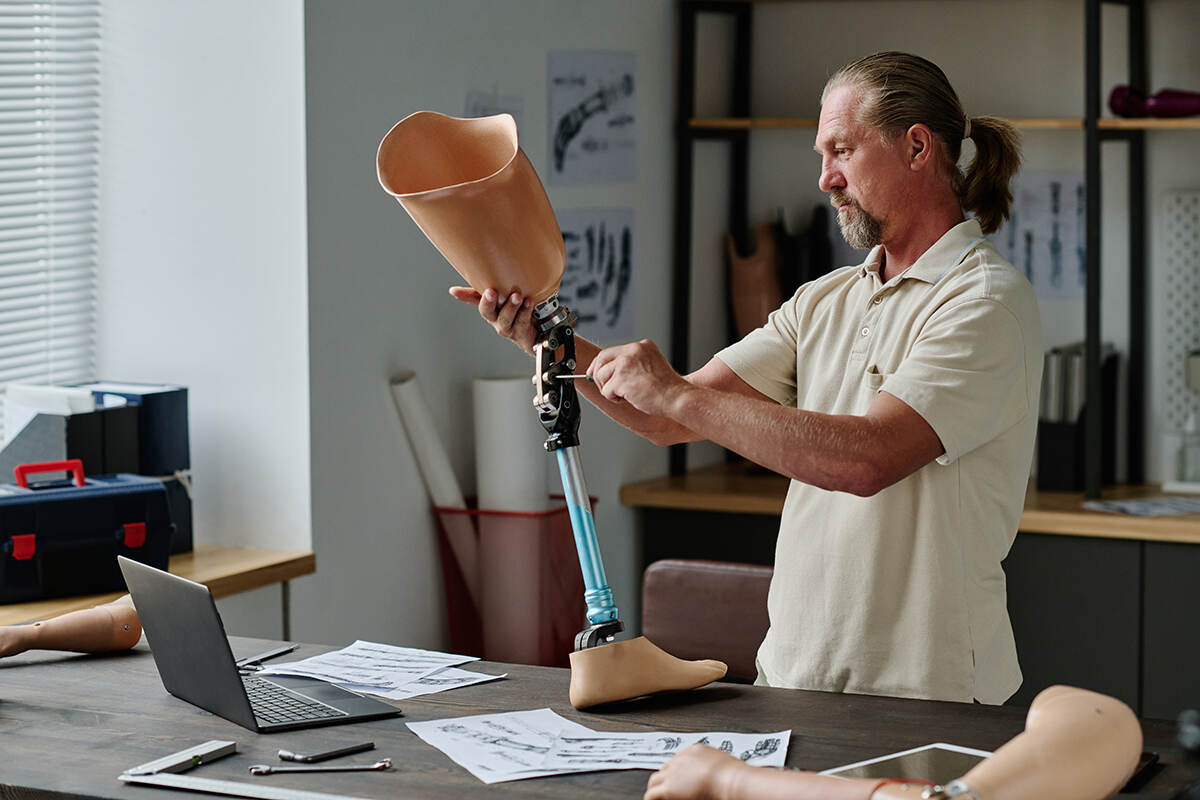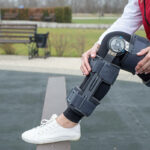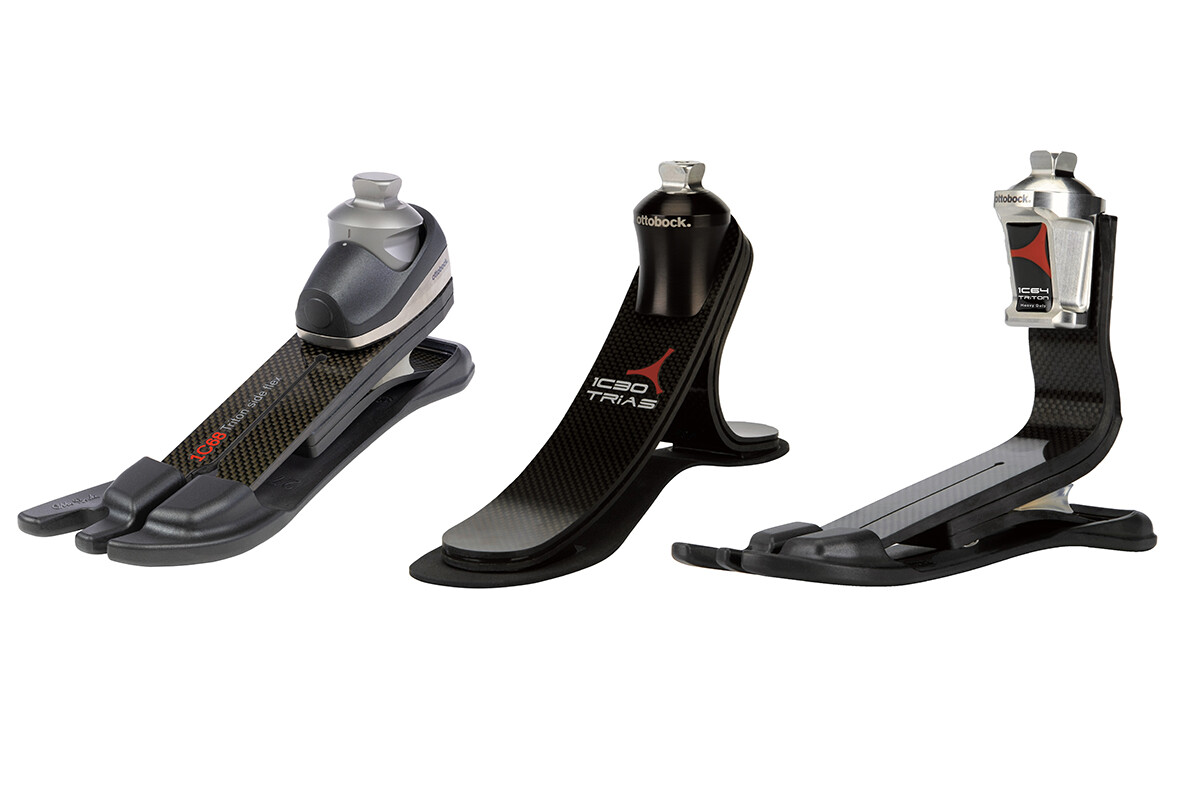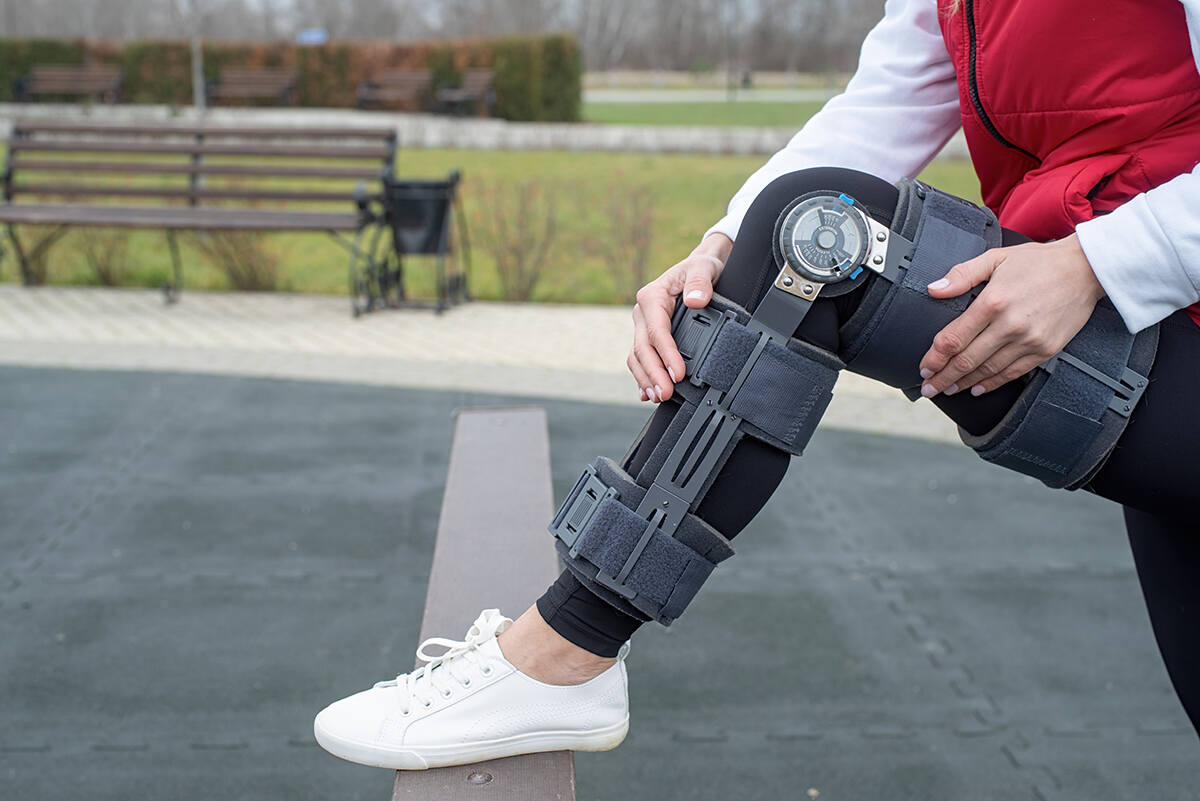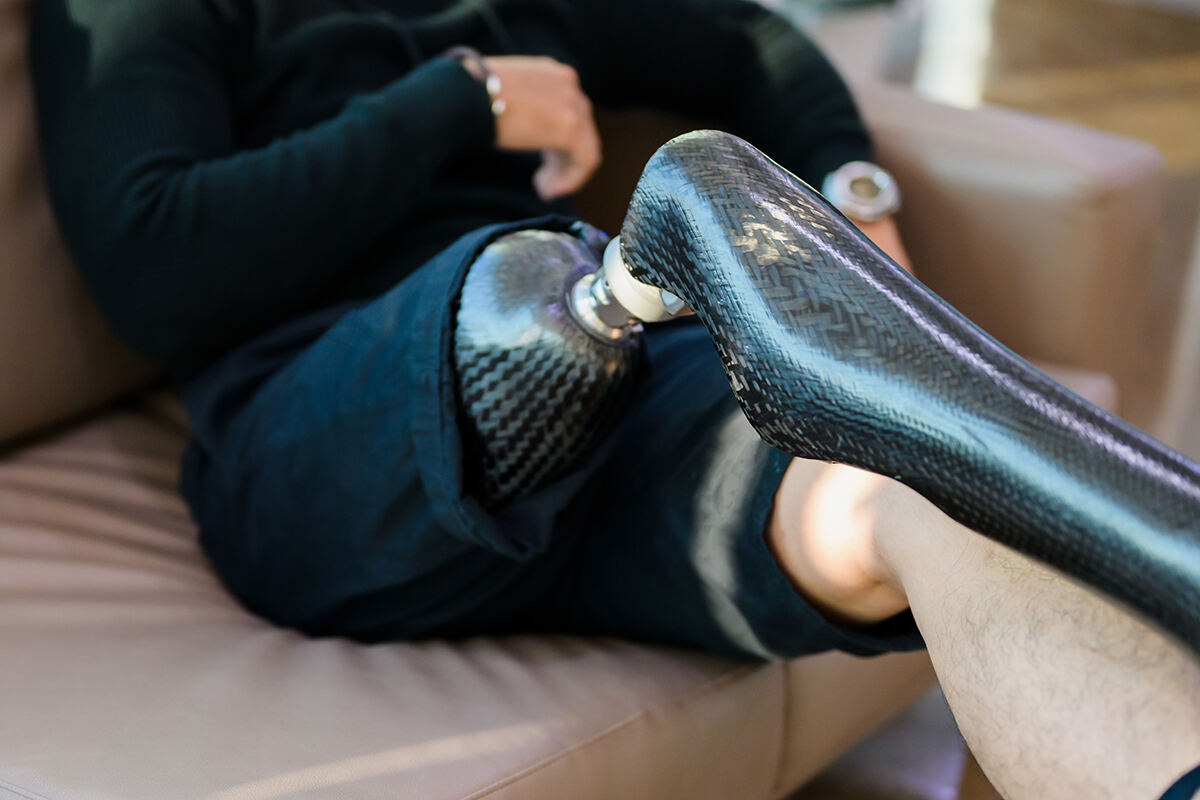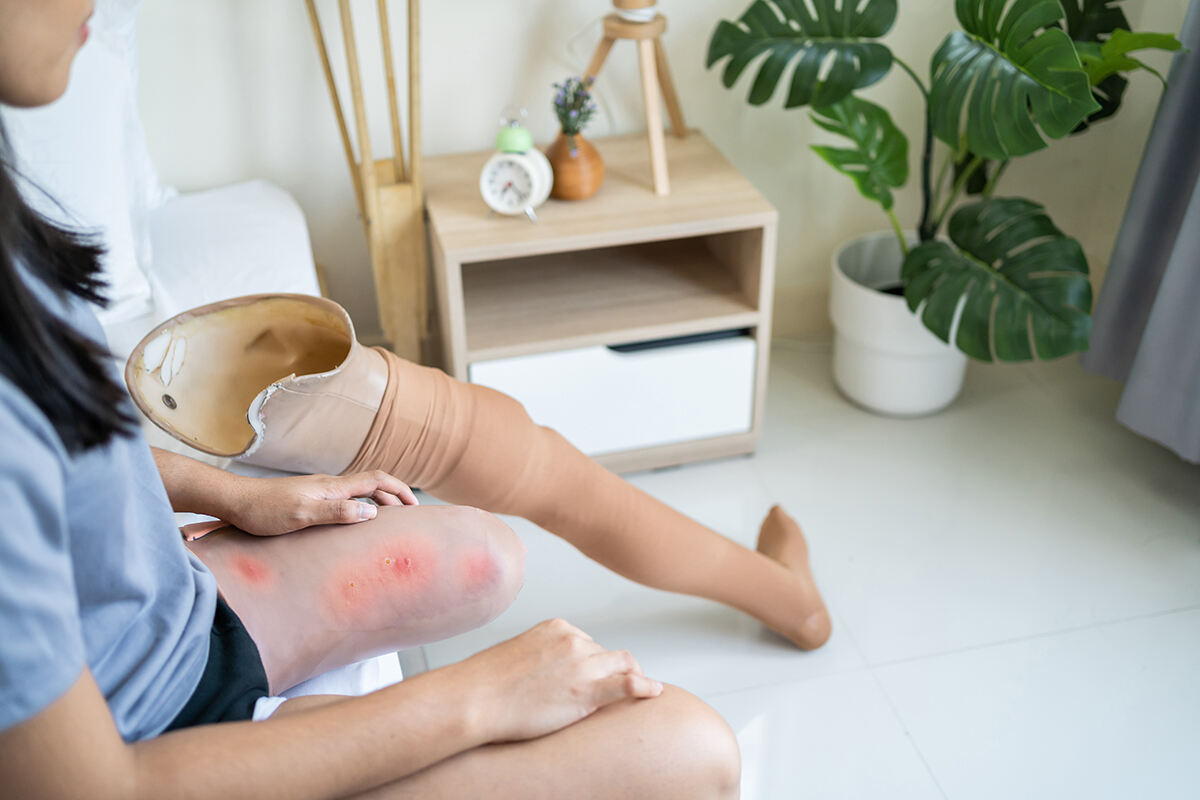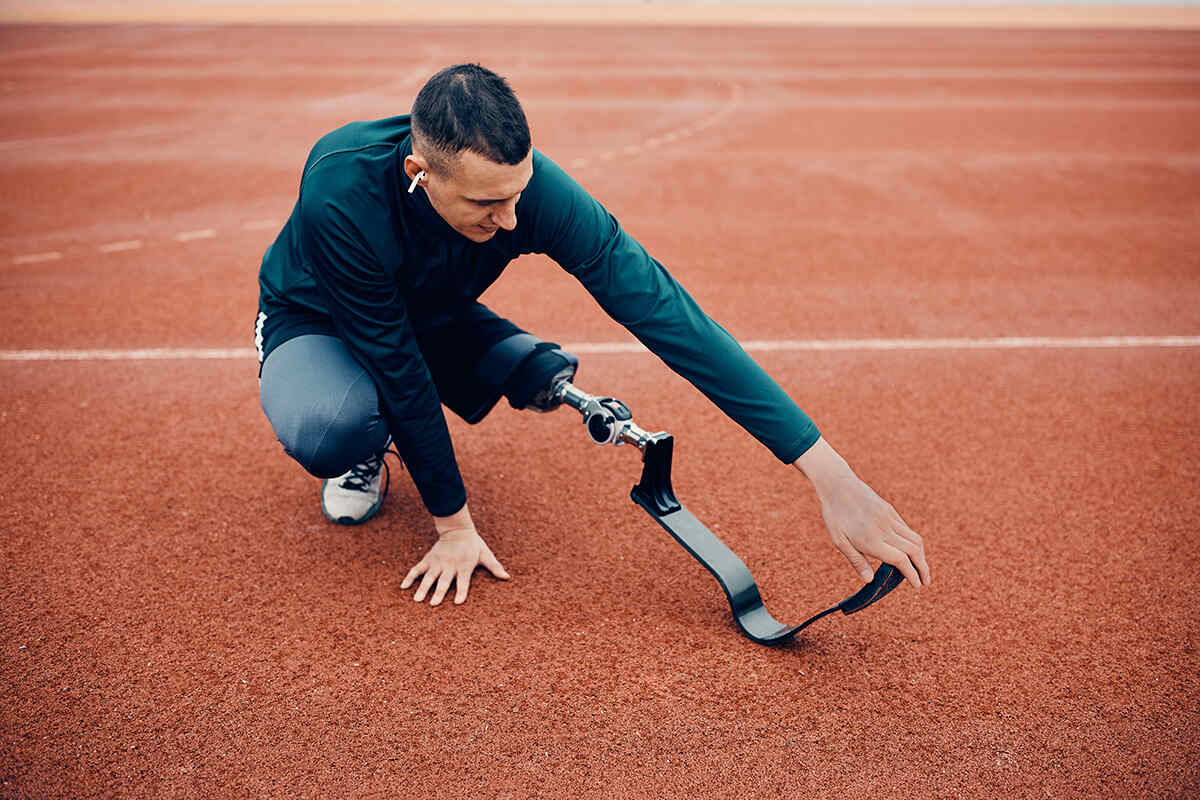Navigating the choice of above knee prosthetic socket types is crucial for ensuring both your comfort and the effectiveness of your prosthesis. This guide provides a comprehensive look at each type of socket, so you’ll know what to discuss with your prosthetist. Read on to discover the benefits and nuances of different above knee sockets without overwhelming details or jargon.
Key Takeaways
- There are several socket types for above-knee prosthetic limbs, each suited to different needs, including the quadrilateral socket for stability, the ischial containment socket for weight distribution, and adjustable sockets for adaptability to limb changes.
- Prosthetic suspension methods, such as suction, vacuum, pin/lock, and silicone self-suspension, are essential for the secure and comfortable attachment of the prosthetic limb, each with its own benefits and considerations.
- An effective fitting process for prosthetics involves casting or scanning for a customized mold, using diagnostic sockets for proper testing and adjustments, and creating a final laminated socket, while rehabilitation and regular follow-up care and adjustments are crucial post-prosthetic acquisition.
Types of Above Knee Prosthetic Sockets
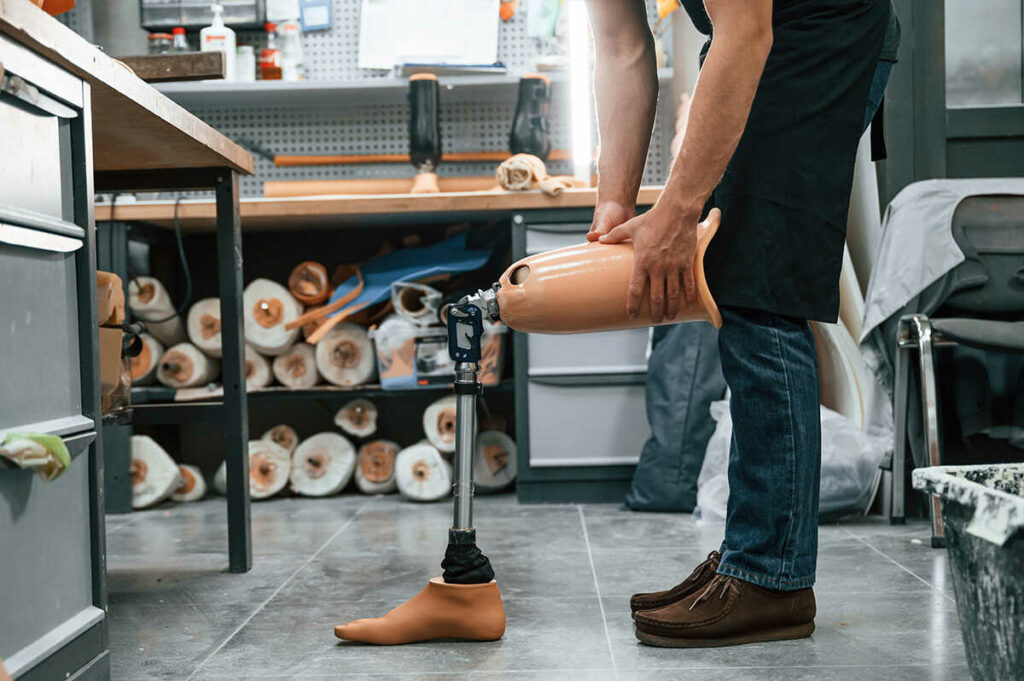
If you think of a prosthetic limb as a building, then the socket is the foundation. It’s the part of the prosthesis that makes contact with your residual limb, providing the base upon which the rest of the prosthesis is built. But not all foundations are created equal. Depending on your individual needs and lifestyle, you might prefer one type of socket over another. Some common types of prosthetic sockets include:
- Patellar tendon-bearing (PTB) socket
- Total surface bearing (TSB) socket
- Hydrostatic socket
- Vacuum-assisted socket
Each type of socket has its own advantages and disadvantages, so it’s important to work with your prosthetist to find the best fit for you.
There are three main types of sockets for above-knee amputees: the quadrilateral socket, ischial containment socket, and adjustable sockets. Each has its unique features and benefits, designed to provide comfort, stability, and mobility to the user. We’ll now explore the features of each.
Quadrilateral Socket
The quadrilateral socket, true to its name, sports a rectangular shape that provides a stable base for the user. It’s a conventional design that has proven its durability over time, offering a robust platform for the pelvis to rest on and ensuring stability for above-knee amputees.
This type of socket utilizes opposing forces within its structure to maintain the ischial tuberosity (sit bone) upon a ledge within the socket. This design, coupled with the static socket shape, contributes to the effectiveness of the quadrilateral socket, making it a suitable choice for many above-knee amputees. The static rigid socket further enhances stability and comfort for above knee amputees during daily activities.
Ischial Containment Socket
Alternatively, the ischial containment socket, a type of rigid encapsulated sockets that offers enhanced control and stability. Unlike the quadrilateral socket, the ischial containment socket fully envelopes the ischial tuberosity within the socket. This design allows for the even distribution of weight across the stump surface, offering stability through its more static socket shape.
This type of socket is especially beneficial for individuals with shorter residual limbs or hip weakness. By reducing pistoning through an airtight seal and delivering anteroposterior stability, the ischial containment socket proves to be a promising option for many above-knee amputees.
Adjustable Sockets
Lastly, we’ll focus on the adjustable socket, a flexible and customizable option that caters to the changing needs of the user. As the residual limb changes in size and shape, an adjustable socket with a rigid brim can accommodate these fluctuations, ensuring a comfortable fit at all times.
From the Socketless Socket to the Infinite Socket, these adjustable sockets offer unique features like movable panels and micro-adjustments that enable swift modifications. They offer improved comfort and higher socket comfort ratings in comparison to conventional prosthetic sockets, making them a suitable choice for individuals seeking a high level of adjustability.
Suspension Methods for Above Knee Prosthetics

Having discussed the foundation, let’s move on to the suspension system, which is essentially the ‘glue’ that holds the prosthetic limb to your residual limb. The suspension method plays a vital role in ensuring a secure and comfortable connection between the prosthetic socket and the user’s residual limb.
There are four primary suspension methods for above-knee prosthetics:
- Suction suspension
- Vacuum suspension
- Pin/lock suspension
- Silicone self-suspension
Each of these methods has its unique mechanism and offers varying levels of comfort, security, and ease of use.
We’ll examine these suspension methods in detail.
Suction Suspension
We’ll begin with the suction suspension method. As the name suggests, it uses a one-way valve to create an airtight seal between the socket and the residual limb. This method operates by utilizing a soft liner and establishing direct contact between the liner and the socket wall, ensuring a secure and snug fit.
The benefits of suction suspension include:
- Superior suspension compared to pin/lock systems
- Decreased pistoning effect
- Improved mobility
- Easy application and removal
However, like any other suspension method, there are some considerations to keep in mind, including the need for a well-fitting socket and the potential for trapped heat.
Vacuum Suspension
Following that, we have the vacuum suspension method, which uses a pump to remove air from the socket, creating a secure and comfortable fit. Vacuum suspension operates by generating negative pressure within the socket while walking, effectively securing the residual limb in place through continuous suction.
This method offers various benefits such as improved balance, physical capability, and a precise socket fit. However, it does have some potential disadvantages, including a reduction in range of motion at the knee, the need for daily charging and maintenance, and the risk of injury with improper use.
Pin/Lock Suspension
The pin/lock suspension method is another commonly used suspension method in above-knee prosthetics. It involves a liner with a connected pin that securely locks into a shuttle mechanism located in the bottom of the socket, providing a stable and easily reproducible connection.
While this method offers the convenience of easy application and removal, it does come with its share of drawbacks.
Silicone Self-Suspension
Finally, we turn our attention to the silicone self-suspension method. This method operates by utilizing a roll-on silicone liner to establish complete contact with the socket walls, thereby guaranteeing secure suspension of the prosthesis during use.
Silicone self-suspension is particularly advantageous for active above-knee amputees because it:
- Provides a high level of suspension necessary for energetic activities
- Enables physiological weight-bearing and mobility
- Offers easy application and removal
Customization and Fitting Process

Getting the perfect fit for your prosthetic limb is a process that involves precise measurements, meticulous crafting, and thorough testing. The customization and fitting process for above-knee prosthetics involves three key stages: casting/scanning, diagnostic sockets, and the creation of the laminated/final socket.
Each stage is vital to ensure a comfortable and functional fit. We will now break down each stage to understand how the prosthetic limb is tailored to your needs.
Cast/Scan
The customization process begins with the cast/scan stage. This involves:
- Taking a cast or a scan of the residual limb
- The cast or scan will serve as the blueprint for creating your custom socket
- Both casting and scanning aim to produce a prosthetic socket that establishes a mechanical coupling with the residual limb.
Technologies such as handheld laser scanning have revolutionized this process, allowing for a more accurate capture of the patient’s limb shape and size. These digital models are then used to create a socket that fits snugly and comfortably on your residual limb.
Diagnostic Sockets
Upon completion of the cast or scan, the subsequent stage involves creating diagnostic sockets. These are essentially test sockets that are used to assess the fit, function, comfort, alignment, and stability of the prosthetic limb before the final socket is made.
This iterative process allows for any necessary adjustments to be made, ensuring that the final socket provides a comfortable and functional fit. The diagnostic sockets are typically made from thermoplastic sheets, which are easy to mould and provide clear visibility for fit assessment and adjustments.
Laminated/Final Socket
After testing and adjusting the diagnostic sockets, the customization process concludes with the creation of the laminated/final socket. This socket is constructed using design software and durable materials to create a custom-fit socket that is both functional and comfortable.
This final socket is also where the design and color customizations come in. From basic colors to intricate patterns, the options are endless, allowing you to have a prosthetic limb that is not only functional but also reflects your personal style.
Prosthetic Knee Options for Above Knee Amputees
The functionality of the prosthetic knee significantly influences the gait of an above-knee amputee. The knee joint is a critical factor in determining function, and the type of prosthesis contributes to the differences in gait.
There are three main types of prosthetic knees options for above-knee amputees: mechanical knees, hydraulic knees, and microprocessor-controlled knees. Each offers a varying level of control and stability, thereby influencing the user’s gait and overall mobility.
Mechanical Knees
Mechanical knees, a traditional choice for above-knee prosthetics, offer basic functionality to low-activity users. They incorporate elements like springs or hydraulic systems for energy storage and release, along with structural components for stability and alignment.
While mechanical knees may not offer the same level of control as hydraulic or microprocessor-controlled knees, they are durable and straightforward, making them a suitable choice for many above-knee amputees.
Hydraulic Knees
In contrast, hydraulic knees provide enhanced control and stability to moderate to high-activity users. They operate using a hydraulic system to facilitate knee locking and improve stability, thereby providing the user with greater control over their prosthesis.
While hydraulic knees offer many benefits, they also come with their share of drawbacks. These include increased weight, heightened maintenance needs, and higher costs compared to other knee prostheses.
Microprocessor-Controlled Knees
Microprocessor-controlled knees present the highest level of control and stability for those who seek it. These knees employ advanced microprocessors to provide a higher level of control, enabling a more natural gait and improved mobility.
Microprocessor-controlled knees, offer a range of benefits, including enhanced stability and walking efficiency, continuous control of knee joint movement, and improved overall quality of life. However, these benefits come at a cost, which can impact their accessibility and affordability.
Rehabilitation and Adjustments
Acquiring a prosthetic limb is not the end of the journey for an above-knee amputee. It’s just the beginning. Rehabilitation and adjustments are crucial aspects of the post-prosthetic acquisition phase. They ensure proper use, maintenance of the prosthetic limb, and ultimately, the restoration of mobility and independence.
Rehabilitation involves physical therapy, where patients learn how to use their prosthesis and gradually progress to more advanced activities. Follow-up care and adjustments are also necessary as the residual limb changes over time, ensuring a comfortable and functional fit.
Physical Therapy
Physical therapy is of paramount importance in the rehabilitation process. It helps patients learn how to use their prosthesis, relearn how to walk, and gradually progress to more advanced activities. Regular exercise and therapy sessions can significantly improve mobility and reduce the risk of complications such as muscle tightening and joint stiffness.
Therapists instruct patients on functional skills such as rolling, sitting, and walking, and provide emotional support and counseling to help patients overcome the challenges they may face during this process. The typical duration of physical therapy for above-knee amputees is usually around six months, but this can vary depending on the individual’s progress.
Follow-Up Care and Adjustments
The rehabilitation process also significantly involves follow-up care and adjustments. As the residual limb changes over time, the prosthetic limb will need to be adjusted to ensure a comfortable and functional fit. These modifications often involve fittings, replacements, and adjustments to the socket.
Regular follow-up visits, typically scheduled every six months, serve several important purposes:
- Timely detection and resolution of any issues
- Opportunity for the patient to discuss any concerns or difficulties they may be experiencing
- Ensuring that the patient receives the necessary support and guidance
These visits are crucial for maintaining the patient’s health and well-being.
Summary
The journey to reclaiming mobility and independence with an above-knee prosthetic is a complex process. With a plethora of options available, from different types of sockets and suspension methods to various knee options, it is a journey full of choices. However, with the right information and guidance, you can navigate through this labyrinth and make informed decisions about your prosthetic care. And remember, the journey doesn’t end with acquiring a prosthetic limb; it’s just the beginning. With regular rehabilitation and follow-up care, you can learn to use your prosthesis effectively, adjust to changes over time, and ultimately reclaim your mobility and independence.
Frequently Asked Questions
What are the different types of above the knee prosthetics?
The different types of above-the-knee prosthetics include C-Leg, Genium, X3 knees, Power/Rheo knees. These advanced prosthetics offer a range of functionalities to suit individual needs.
What are the different socket designs?
The main types of socket designs for transfemoral amputees are the plug fit, quadrilateral, and ischial containment sockets, each with unique weight-bearing concepts and locking systems. Hex sockets come in six-point and 12-point variations, with different angles inside the bolt end.
What is the purpose of a prosthetic socket?
The purpose of a prosthetic socket is to provide a stable foundation for the prosthetic limb by making direct contact with the residual limb.


